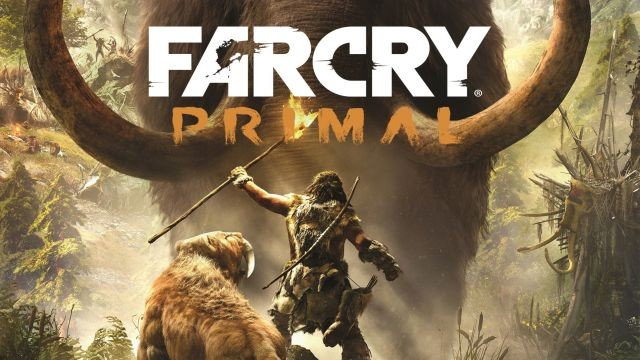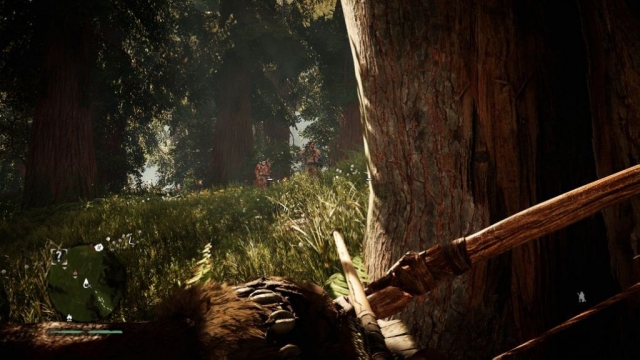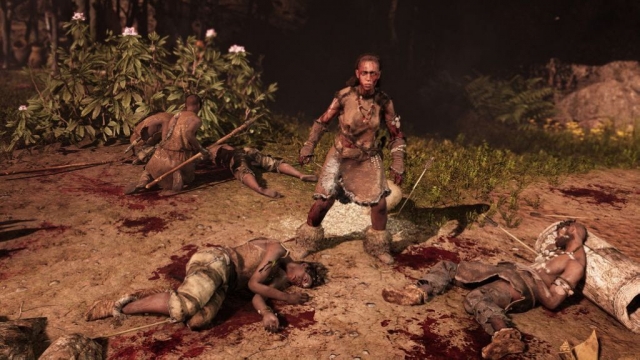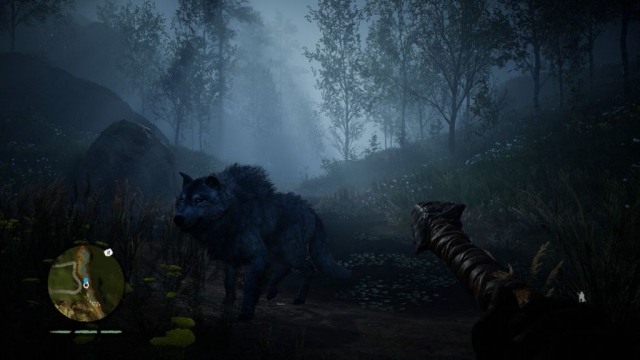Far Cry Primal

In 2012, Ubisoft Montreal laid the foundation for Far Cry Primal, without our even knowing it. Far Cry 3 successfully transformed the fringe franchise into an open-world juggernaut, and the standalone expansion that followed – a neon 80s fever dream called Blood Dragon – set a precedent for bold new settings the series could explore in the future.
Far Cry Primal is unique in how it combines the massive scale the series adopted with the third game and the Stone Age that frees it from the confines that come with a modern setting.
The sparse narrative may be the most startling change for longtime fans of the series, as it introduces its world and the characters that inhabit it via subtitles and flashy imagery. It’s imperfect, and not just because of the obvious problem that comes from focusing too much on one and you’ll miss out on the other.
In semi-good news, slow readers and those who get easily distracted by the wild hand gestures of indigenous cave people aren’t missing out on much. And while a player’s reading comprehension isn’t normally considered in games development, Primal’s inability to provide an incentive for the player to invest emotionally in the plight of the Takkar most definitely is.
The Takkar is the tribe of like-minded people you more or less adopt at the beginning of the game, and many of the game’s core systems are built around them. As their leader, you’re tasked with scavenging for the resources that are required to make a civilization, or whatever the Mesolithic equivalent of that might be.
It’s a relief that your allies can be so easily identified for the like-minded individuals they are just by glancing at the color of their face paint. The curious moral spectrum that determines friend from foe can be summed up that easily. It’s no more complex than body paint.
The rival tribes’ penchant for cannibalism could’ve been a factor if I wasn’t sure that literally every one of the Takkar I fought so hard to protect hadn’t chewed on a human finger at some point in their lives. I’m looking at you, lady with the ear necklace.
Using body paint to determine whether someone deserves a spear in the back of their head or if they should be greeted with what I’m going to assume is the Takkar version of a friendly “Sup?” might’ve made sense in 10,000 BCE. It’s considerably less effective in a game that’s trying to get you to care about the story it’s trying to tell.
This is where Primal gets woefully repetitive. Newcomers won’t realize it, but this series has been relying on themed variations of the same mechanics we loved in Far Cry 3, liked in Blood Dragon, and enjoyed in Far Cry 4 right up to the point where it became obvious that it was more of the same.
Stop me if this sounds familiar. You’re an outsider visiting an exotic locale with a mission that unravels the very moment the introductory cinematic ends, leaving you with a gorgeous world brimming with disconnected filler missions. You hunt for exotic animals, clear enemy outposts, assassinate enemy leaders, and aid socially stunted specialists so you can unlock new gear.
These things are obligatory in Primal, which to its credit, does try to shake things up a bit. Bears, lions, wolves and even sabretooth tigers can all be tamed, and so can a handful of their rarer and more powerful cousins. It goes a long way in making up for the drastic changes that have been made to the combat, since apparently, guns weren’t around back then.
Speaking of animal comradery, the owl you get is a real hoot to work with (sorry). He’s basically a more feathery version of the binoculars, if the binoculars could be outfitted with weaponized beehives and assorted other amazing things. The owl’s armaments are acquired via a skill tree that also holds new abilities for the lead character.
It doesn’t take long until you’re strolling confidently through Oros Valley, looking for goons so you can practice killing them in a flurry of torn tracheas and ventilated abdomens. And really, isn’t that what Far Cry is all about? I’m worried it might be.
It’s not that these activities are boring. They’re not. I genuinely enjoy spying on enemy outposts from afar while I mentally draft a plan of attack to even the odds that have been stacked against me. These games empower the player by imbuing the character we control, the chosen one, naturally, with a knack for killing that’d make Rambo uncomfortable. That’s enormously satisfying at first, and it’s less so when you’ve done it dozens more times.
Even the crafting, which is arguably one of the game’s bigger selling points, could’ve been fleshed out more. Collect X amount of X, find the corresponding weapon or tool and press A. As it is, it just feels like busy work. On three different occasions over the 22+ hours I spent inflicting genocide on the non-Takkar locals of Oros Valley, I realized I had amassed enough trash to upgrade the same piece of gear twice. What’s worse is I’m sure I would not have noticed a difference had each upgrade not come with a distinctive look.
It’s unfortunate that such a promising world would be wasted by a publisher that’s grown accustomed to striving for innovation until a winning formula emerges, then never again. Far Cry has gone the way of Assassin’s Creed, another source of income that’s been left to stagnate so everything that worked can be borrowed by the inevitable sequel.
Reviewed By: Adam Dodd
Publisher: Ubisoft
Rating: 65%
——————————————————————————–
This review is based on a digital copy of Far Cry Primal for the Xbox One provided by Ubisoft.
 Game Over Online
Game Over Online











